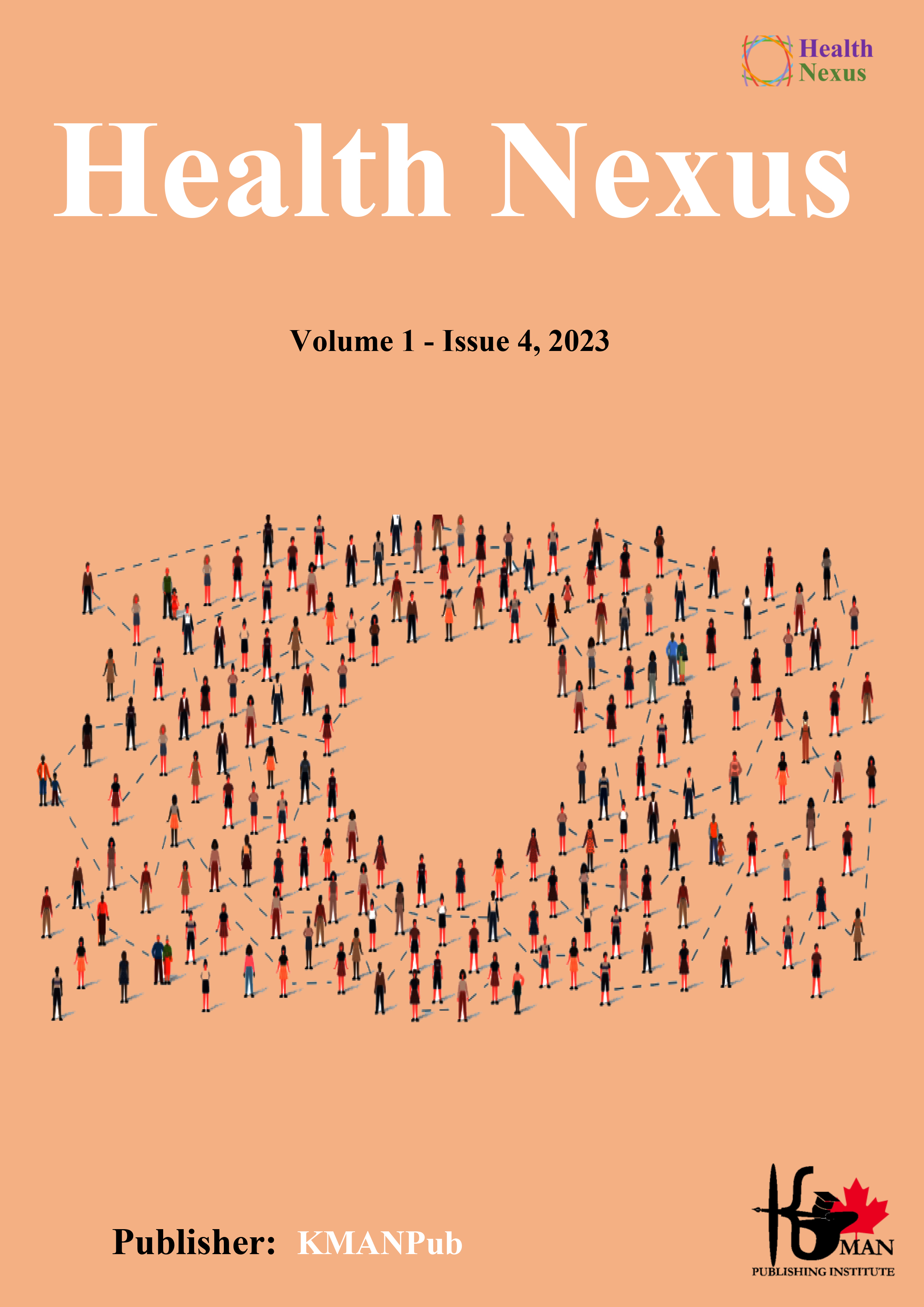The Association between Physical Activity and Cancer Prevention, Recovery, and Recurrence: A Narrative Review
Keywords:
Neoplasms, Cancer, Physical Activity, Primary Prevention, Post-Exercise Recovery, Relapse Prevention, Physiological PhenomenaAbstract
Cancer is a leading cause of death globally, accounting for around one in six deaths worldwide. This highlights the need to find effective prevention and recovery strategies. Physical activity, encompassing all bodily movements that consume energy, is significantly linked to cancer risk and survival. 28% of adults are insufficiently active, making physical inactivity the fourth leading risk factor for global mortality. Approximately one-third of cancer deaths are due to low physical activity and a poor diet. This narrative review explores the relationship between physical activity and cancer prevention, recovery, and recurrence. The findings indicate that adhering to recommended physical activity levels can significantly reduce the risk of various cancers, including breast, endometrial, kidney/renal, colon, rectal, liver, lung, bladder, head and neck cancer, gastric cardia, esophageal adenocarcinoma, myeloma, myeloid leukemia, and non-Hodgkin lymphoma. Physical activity aids in cancer recovery by reducing treatment side effects, enhancing physical fitness, mental health, and quality of life, and reducing recurrence risk. It influences cancer progression by controlling genomic instability, metabolic regulation, hormonal balance, and mitochondrial and immune function enhancement. Despite the known benefits, integrating physical activity into cancer care is not widespread due to barriers like pain, fatigue, a lack of motivation, and insufficient information. In conclusion, increasing physical activity across all life domains can markedly reduce cancer's burden and improve well-being. Personalized physical activity goals are recommended for individuals of all ages, including children with cancer. The study also recommends further research into different types of physical activities and their impact on various cancer types This is crucial for developing targeted interventions and comprehensive care strategies to harness the full potential of physical activity in cancer control.
Downloads
References
1. World Health Organization. Cancer. 2022 [Available from: https://www.who.int/news-room/fact-sheets/detail/cancer.
2. Global Burden of Disease Study 2019(GBD 2019) Data Resource. IHMEGHDx2019. https://ghdx.healthdata.org/gbd-2019
3. Parkin DM, Pisani P, Ferlay J. Estimates of the worldwide incidence of 25 major cancers in 1990. International journal of cancer. 1999;80 (6):827-41. [DOI]
4. Cancer Tomorrow. Global Cancer Observatory: International Agency for Research on Cancer, World Health Organization.; 2020. https://gco.iarc.fr/tomorrow/en
5. Siegel R, Miller KD, Wagle NS, Jemal A. Cancer statistics, 2023. CA: a cancer journal for clinicians. 2023;73 (1):17-48. [PMID: 36633525] [DOI]
6. Cancer Today. Global Cancer Observatory. 2020. https://gco.iarc.fr/today
7. Physical activity. World Health Organization. 2022. https://www.who.int/news-room/fact-sheets/detail/physical-activity.
8. Khan KM, Thompson AM, Blair SN, Sallis JF, Powell KE, Bull FC, Bauman AE. Sport and exercise as contributors to the health of nations. Lancet. 2012;380 (9836):59-64. [PMID: 22770457] [DOI]
9. Global recommendations on physical activity for health. World Health Organization; 2010.
10. Hallal PC, Andersen LB, Bull FC, Guthold R, Haskell W, Ekelund U, Group LPASW. Global physical activity levels: surveillance progress, pitfalls, and prospects. Lancet.380 (9838):247-57. [PMID: 22818937] [DOI]
11. Guthold R, Stevens GA, Riley LM, Bull FC. Worldwide trends in insufficient physical activity from 2001 to 2016: a pooled analysis of 358 population-based surveys with 1•9 million participants. The Lancet Global health. 2018;6 (10):e1077–e86. [PMID: 30193830] [DOI]
12. Patel AV, Friedenreich CM, Moore SC, Hayes SC, Silver JK, Campbell KL, et al. American College of Sports Medicine Roundtable Report on Physical Activity, Sedentary Behavior, and Cancer Prevention and Control. Medicine and science in sports and exercise.51 (11):2391-402. [PMID: 31626056] [PMCID: PMC6814265] [DOI]
13. Moore SC, Lee IM, Weiderpass E, Campbell PT, Sampson JN, Kitahara CM, et al. Association of Leisure-Time Physical Activity With Risk of 26 Types of Cancer in 1.44 Million Adults. JAMA internal medicine. 2016;176 (6):816-25. [PMID: 27183032] [PMCID: PMC5812009] [DOI]
14. 2018 Physical Activity Guidelines Advisory Committee Scientific Report. Washington, DC: U.S. Department of Health and Human Services; 2018.
15. Matthews CE, S M, Arem H, Cook M, Trabert B, Håkansson N, et al. Amount and Intensity of Leisure-Time Physical Activity and Lower Cancer Risk. Journal of clinical oncology. 2020;38 (7):686-97. [PMID: 31877085] [PMCID: PMC7048166] [DOI]
16. Ainsworth BE, Haskell WL, Whitt MC, Irwin ML, Swartz, A M, J SS, O'Brien WL, al e. Compendium of physical activities: an update of activity codes and MET intensities. Medicine and science in sports and exercise. 2000;32 (9 Suppl):S498-504. [PMID: 10993420] [DOI]
17. Ainsworth BE H, W L, Herrmann SD, Meckes N, Bassett DRJ, Tudor-Locke C, Greer JL, al e. 2011 Compendium of Physical Activities: a second update of codes and MET values. Medicine and science in sports and exercise. 2011 43 (8):1575-81.
18. White E, Hunt JR, Casso D. Exposure measurement in cohort studies: the challenges of prospective data collection. Epidemiologic reviews. 1998;20 (1):43-56. [PMID: 9762508] [DOI]
19. Patel AV, Hildebrand JS, Campbell PT, Teras LR, Craft LL, McCullough ML, Gapstur SM. Leisure-Time Spent Sitting and Site-Specific Cancer Incidence in a Large U.S. Cohort. Cancer epidemiology, biomarkers & prevention. 2015;24 (9):1350-9.
20. Schmid D, Leitzmann M. Television viewing and time spent sedentary in relation to cancer risk: a meta-analysis. Journal of the National Cancer Institute. 2014;106 (7):dju098. [DOI]
21. Keadle SK, Conroy DE, Buman MP, Dunstan DW, Matthews CE. Targeting Reductions in Sitting Time to Increase Physical Activity and Improve Health. Medicine and science in sports and exercise. 2017;49 (8):1572-82. [PMID: 28272267] [PMCID: PMC5511092] [DOI]
22. Lynch B, Mahmood S, Boyle T. Sedentary behaviour and cancer. In: Leitzmann M, Jochem C, Schmid D, editors. Sedentary Behaviour Epidemiology: Springer International Publishing; 2018.
23. Shen D, Mao W, Liu T, Lin Q, Lu X, Wang Q, et al. Sedentary behavior and incident cancer: a meta-analysis of prospective studies. PloS one. 2014;9(8):e105709. [PMID: 25153314] [PMCID: PMC4143275] [DOI]
24. Nguyen LH, Liu P-H, Zheng X, Keum N, Zong X, Li X, et al. Sedentary behaviors, TV viewing time, and risk of young-onset colorectal cancer. JNCI cancer spectrum. 2018;2(4):pky073. [PMID: 30740587] [PMCID: PMC6361621] [DOI]
25. Lai J, Lucas RM, Armstrong M, Banks E. Prospective observational study of physical functioning, physical activity, and time outdoors and the risk of hip fracture: a population-based cohort study of 158,057 older adults in the 45 and up study. Journal of bone and mineral research. 2013;28 (10):2222-31. [PMID: 23609238] [DOI]
26. Campbell K, Winters-Stone KM, Wiskemann J, May AM, Schwartz AL, Courneya KS, et al. Exercise Guidelines for Cancer Survivors: Consensus Statement from International Multidisciplinary Roundtable. Medicine and science in sports and exercise. 2019;51 (11):2375-90. PMID: 31626055] [PMCID: PMC8576825] [DOI]
27. Misiąg W, Piszczyk A, Szymańska-Chabowska A, Chabowski M. Physical Activity and Cancer Care—A Review. Cancers. 2022;14(17):4154. [PMID: 36077690] [PMCID: PMC9454950] [DOI]
28. Beesley VL, Price MA, Butow PN, Green AC, Olsen CM, Group AOCS, et al. Physical activity in women with ovarian cancer and its association with decreased distress and improved quality of life. Psycho‐Oncology. 2011;20(11):1161-9. [PMID: 20740686] [DOI]
29. Galvao DA, Taaffe DR, Spry N, Cormie P, Joseph D, Chambers SK, et al. Exercise preserves physical function in prostate cancer patients with bone metastases. Medicine and science in sports and exercise. 2018;50(3):393-399. [PMID: 29036016] [PMCID: PMC5828380] [DOI]
30. Singh B, Hayes SC, Spence RR, Steele ML, Millet G, Gergele L. Exercise and colorectal cancer: a systematic review and meta-analysis of exercise safety, feasibility and effectiveness. The international journal of behavioral nutrition and physical activity. 2020 17 (1):122. [PMID: 32972439] [PMCID: PMC7513291] [DOI]
31. Li X, Geng L, Yuan Q, Yue S. Relationship between self‐efficacy and physical activity among colorectal cancer patients: A cross‐sectional study. Nursing Open. 2023;10(6):3613-21. [PMID: 36611230] [PMCID: PMC10170901] [DOI]
32. Jones LW, Peddle CJ, Eves ND, Haykowsky MJ, Courneya KS, Mackey JR, et al. Effects of presurgical exercise training on cardiorespiratory fitness among patients undergoing thoracic surgery for malignant lung lesions. Cancer. 2007 110 (3):590-8. [PMID: 17582629] [DOI]
33. Baumann F, Bloch W, Beulertz J. Clinical exercise interventions in pediatric oncology: a systematic review. Pediatric research. 2013 74 (4):366-74. [PMID: 23857296] [DOI]
34. Bhome R, Peppa N, Karar S, McDonnell D, Mirnezami A, Hamady Z. Metabolic syndrome is a predictor of all site and liver-specific recurrence following primary resection of colorectal cancer: Prospective cohort study of 1006 patients. European journal of surgical oncology. 2021 47 (7):1623-8. [PMID: 33483238] [PMCID: PMC7611058] [DOI]
35. Dieli-Conwright CM, Courneya KS, Demark-Wahnefried W, Sami N, Lee K, Buchanan TA, et al. Effects of Aerobic and Resistance Exercise on Metabolic Syndrome, Sarcopenic Obesity, and Circulating Biomarkers in Overweight or Obese Survivors of Breast Cancer: A Randomized Controlled Trial. Journal of clinical oncology. 2018;36 (9):875-83. [PMID: 29356607] [PMCID: PMC5858524] [DOI]
36. Cannioto RA, Hutson A, Dighe S, McCann W, McCann SE, Zirpoli GR, et al. Physical Activity Before, During, and After Chemotherapy for High-Risk Breast Cancer: Relationships With Survival. Journal of the National Cancer Institute. 2021;113 (1):54-63.
37. Kerr J, Anderson C, Lippman SM. Physical activity, sedentary behaviour, diet, and cancer: an update and emerging new evidence. The Lancet Oncology. 2017 18 (8):e457-e71. [PMID: 28759385] [DOI]
38. Lauby-Secretan B, Scoccianti C, Loomis D, Grosse Y, Bianchini F, Straif K. International Agency for Research on Cancer Handbook Working Group. Body Fatness and Cancer--Viewpoint of the IARC Working Group. New England journal of medicine 2016;375 (8):794-8. [PMID: 27557308] [PMCID: PMC6754861] [DOI]
39. Neilson HK, Conroy S, Friedenreich C. The Influence of Energetic Factors on Biomarkers of Postmenopausal Breast Cancer Risk. Current nutrition reports. 2013;3 (1):22-34. [PMID: 24563822] [PMCID: PMC3921460] [DOI]
40. Winzer BM, Whiteman DC, Reeves MM, D PJ. Physical activity and cancer prevention: a systematic review of clinical trials. Cancer causes & control : CCC. 2011;22 (6):811-26. [PMID: 21461921] [DOI]
41. Wertheim BC, Martínez ME, Ashbeck EL, Roe D, Jacobs ET, Alberts DS, Thompson PA. Physical activity as a determinant of fecal bile acid levels. Cancer epidemiology, biomarkers & prevention. 2009 18 (5):1591-8. [PMID: 19383885] [PMCID: PMC2743306] [DOI]
42. Bernstein H, Bernstein C, Payne CM, Dvorakova K, Garewal H. Bile acids as carcinogens in human gastrointestinal cancers. Mutation research. 2005;589 (1):47-65. [PMID: 15652226] [DOI]
43. Hojman P, Gehl J, Christensen JF, Pedersen BK. Molecular Mechanisms Linking Exercise to Cancer Prevention and Treatment. Cell metabolism. 2018;27 (1):10-21. [PMID: 29056514] [DOI]
44. Kim JS, Taaffe DR, Galvão DA, D CT, Redfern AD, Hart NH, et al. Acute effect of high-intensity interval aerobic exercise on serum myokine levels and resulting tumour-suppressive effect in trained patients with advanced prostate cancer. Prostate cancer and prostatic diseases. 2023;26 (4):795-801. [PMID: 36446945] [DOI]
45. Clemente-Suárez VJ, Martín-Rodríguez A, Redondo-Flórez L, Ruisoto P, Navarro-Jiménez E, Ramos-Campo DJ, Tornero-Aguilera JF. Metabolic Health, Mitochondrial Fitness, Physical Activity, and Cancer. Cancers(Basel). 2023 15 (3):814. [PMID: 36765772] [PMCID: PMC9913323] [DOI]
46. López-Armada MJ, Riveiro-Naveira RR, Vaamonde-García C, Valcárcel-Ares MN. Mitochondrial dysfunction and the inflammatory response. Mitochondrion. 2013;13 (2):106-18. [PMID: 23333405] [DOI]
47. Diet, Nutrition, Physical Activity and Cancer: a Global Perspective. Continuous Update Project Expert Report 2018. 2018.
48. Schmitz KH, Courneya KS, Matthews C, Demark-Wahnefried W, Galvão DA, Pinto BM, Irwin ML. American College of Sports Medicine. American College of Sports Medicine roundtable on exercise guidelines for cancer survivors. Medicine and science in sports and exercise. 2010;42 (7):1409-26.
49. Cancer Trends Progress Report. Cancer Survivors and Physical Activity.: National Cancer Institute; 2022.
50. Avancini A, Pala V, Trestini I, Tregnago D, Mariani L, Sieri S, et al. Exercise Levels and Preferences in Cancer Patients: A Cross-Sectional Study. International journal of environmental research and public health. 2020;17 (15):5351. [PMID: 32722265] [PMCID: PMC7432474] [DOI]
51. Shabanian J, Capaldi JM, Luna-Lupercio B, Finster LJ, Noskoff K, Gan H, et al. Healthcare providers' promotion of physical activity among child and adolescent cancer survivors: strategies and challenges. Journal of cancer survivorship : research and practice. 2023;17 (6):1546-60. [PMID: 35759086] [PMCID: PMC9244136] [DOI]
52. Eng L, Pringle D, Su J, Shen X, Mahler M, Niu C, et al. Patterns, perceptions, and perceived barriers to physical activity in adult cancer survivors. Supportive care in cancer. 2018;26 (11):3755-63. [PMID: 29808379] [DOI]
53. Cho D, Park CL. Barriers to physical activity and healthy diet among breast cancer survivors: A multilevel perspective. European journal of cancer care. 2018;27 (1):10.1111/ecc.12772. [PMID: 28940854] [PMCID: PMC5786487] [DOI]
54. Min J, Yoo S, Kim MJ, Yang E, Hwang S, Kang M, et al. Exercise participation, barriers, and preferences in Korean prostate cancer survivors. Ethnicity & health. 2021;26 (8):1130-42. [PMID: 31234646] [DOI]
55. Nielsen AM, A WW, Gavin KL, Cottrell AM, Solk P, Torre EA, et al. Preferences for mHealth physical activity interventions during chemotherapy for breast cancer: a qualitative evaluation. Supportive care in cancer. 2020;28 (4):1919-28. [PMID: 31367917] [PMCID: PMC6992480] [DOI]
56. ACSM’s Guidelines for Exercise Testing and Prescription. Riebe D, Ehrman JK, Liguori G, Magal M, editors. Philadelphia, PA: Wolters Kluwer; 2018.
57. Medicine ACoS, Armstrong LE, Casa DJ, Millard-Stafford M, Moran DS, Pyne SW, Roberts WO. American College of Sports Medicine position stand. Exertional heat illness during training and competition. Medicine and science in sports and exercise. 2007;39 (3):556-72.
58. Parker NH, Arlinghaus KR, Johnston CA. Integrating Physical Activity Into Clinical Cancer Care. American journal of lifestyle medicine. 2018;12 (3):220-3.
Downloads
Additional Files
Published
Submitted
Revised
Accepted
License
Copyright (c) 2023 Shazia Tahira (Author)

This work is licensed under a Creative Commons Attribution-NonCommercial 4.0 International License.
















